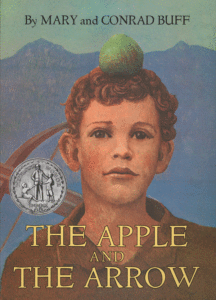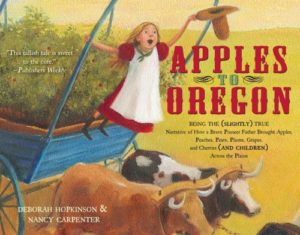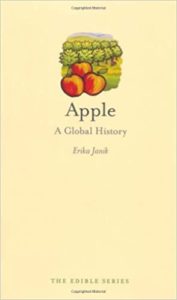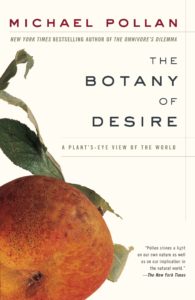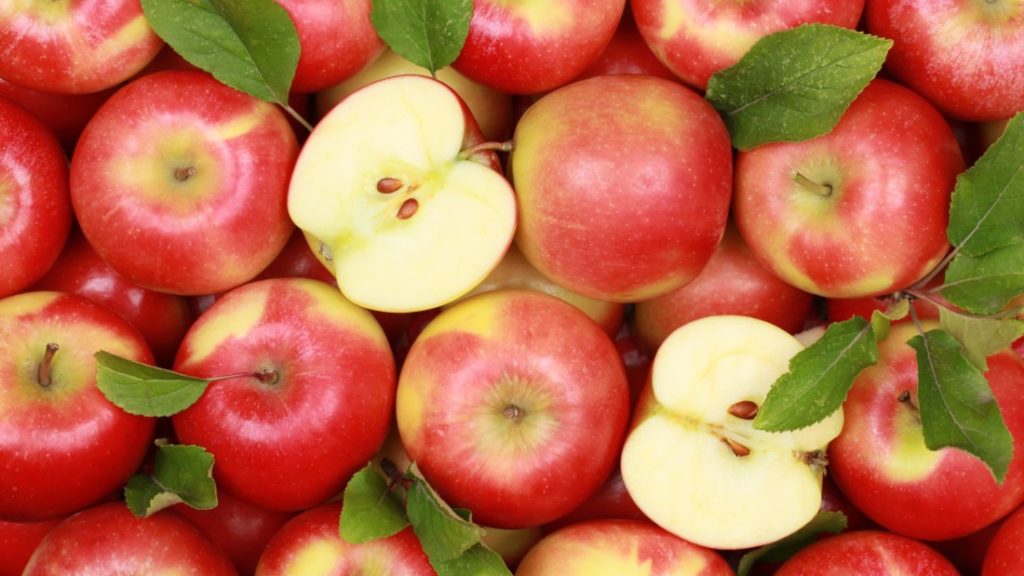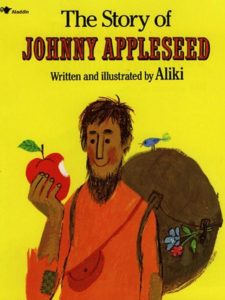 |
Aliki’s charming The Story of Johnny Appleseed (Aladdin, 1971) is a gentle straightforward tale, illustrated with oil pastel drawings. For ages 3-7. |
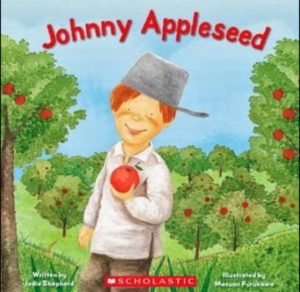 |
Jodie Shepherd’s Johnny Appleseed (Cartwheel Books, 2010) is a simple picture-book biography, beginning with baby Johnny who had “cheeks as red and round as apples.” For ages 3-7. |
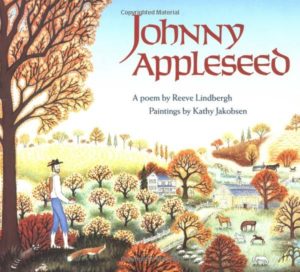
|
Reeve Lindbergh’s poetic Johnny Appleseed (Little, Brown Books for Young Readers, 1993) is beautifully illustrated with detailed folk-art paintings and quilt-block-patterned borders. (“These apple trees were planted here/A century ago -/A hundred years of springtime bloom/A hundred years of snow.”) For all ages. |
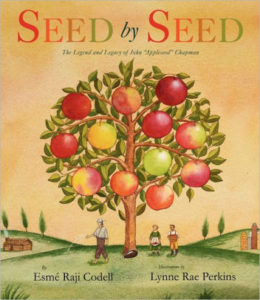
|
Esme Raji Codell’s picture book Seed by Seed (Greenwillow Books, 2012) describes Johnny Appleseed’s life and philosophy. Though a good deal of legend and myth surrounds him, Codell explains, we do know “that by doing the same small act of planting seeds every day, Johnny Appleseed changed the landscape of our nation. Seed by seed, deed by deed.” Lessons learned here include respect for nature, the importance of sharing, and the idea that large goals can be accomplished bit by bit, with small steps. Included is a recipe for apple pie. For ages 4-8. |
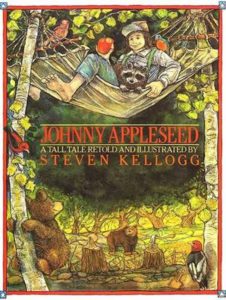
|
Steven Kellogg’s tall-tale-style Johnny Appleseed (HarperCollins, 1998) is a mix of legend and historical fact: Johnny charms the animals, has a wolf and a raccoon as friends, sleeps in a hollow log, and grows marvelous apples that look, in the illustrations, the size of cantaloupes. For ages 5-8. |
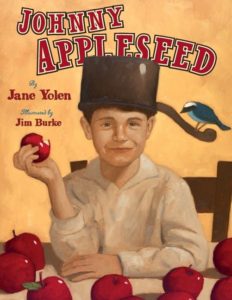
|
In Jane Yolen’s Johnny Appleseed: The Legend and the Truth (HarperCollins, 2011), each double-page spread has an evocative four-line rhyme, written in old-fashioned script (“Apple blossoms/Top the sill/Welcome baby/With a will/Johnny, Johnny Appleseed”), a short fictionalized paragraph of about Johnny’s life and work, and a note about what we know to be fact. Richly colored illustrations feature stunningly dark-red apples. For ages 5-8. |
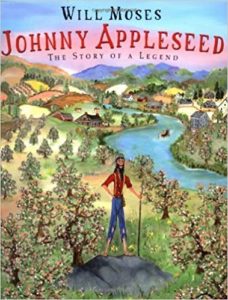
|
Will Moses’s Johnny Appleseed: The Story of a Legend (Philomel, 2001), illustrated with terrific folk-art paintings, has a more sophisticated text and provides more historical background than most Appleseed picture books. For ages 7-10. |
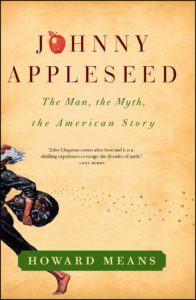
|
Howard Means’s Johnny Appleseed: The Man, The Myth, The American Story (Simon & Schuster, 2011) is a fascinating 300+-page biography of the thoroughly odd John Chapman: animal whisperer, tree hugger, vegetarian, pacifist, and (probably, says Means) insane. For older teenagers and adults. |
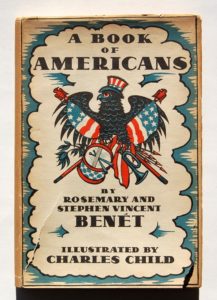
|
The poem “Johnny Appleseed” first appeared in Rosemary and Stephen Vincent Benet’s A Book of Americans, a history in poems, originally published in 1933: “Of Jonathan Chapman/Two things are known/That he loved apples/That he walked alone.” Johnny Appleseed (Margaret K. McElderry, 2001) is a picture-book version of the poem with colored-pencil illustrations by S.D. Schindler. Both books are out of print, but are available through used-book dealers and libraries. |









